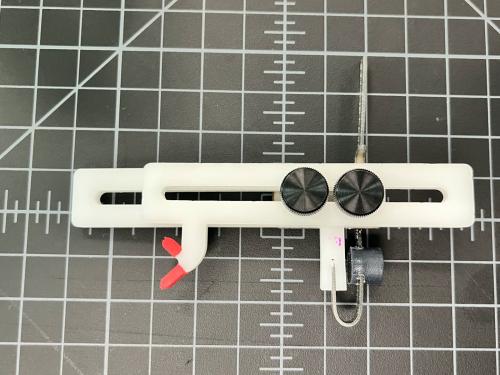
UC Davis Biomedical Students Design and Prototype Solutions to Solve Real-World Medical Challenges
Quick Summary
- Biomedical engineering students design and prototype devices for real-world health and veterinary challenges
Biomedical Engineering Society Student Organization (BMES) leaders Melinda Quan, Vaibhav Satija, and Tabitha Lew hosted the eighth annual Make-A-Thon at Biomedical Engineering’s Genome and Biomedical Sciences Facility on the UC Davis campus.
Like a hackathon, the Make-a-Thon is a competition where students and community members have 48 hours to design devices to solve real-life biomedical engineering challenges from UC Davis human and animal health clinicians.

As Quan explains, “We try to think of general areas where a mainly mechanical solution could be applied (i.e., orthopedics or ophthalmology). From there, we reach out to multiple clinicians who might be interested in this event and have them propose a problem.”
She says they usually receive fantastic ideas from clinicians—the biggest challenge is identifying a prompt that people could solve in two days. The UC Davis Translating Engineering Advances to Medicine (TEAM) lab manager, Steven Lucero helps filter out proposals.
Designing and Building: All In 48 Hours
The teams created a tool for veterinarians to safely prop open the mouth of an anesthetized small animal during oral surgery. They’ve designed pill bottle openers, indirect ophthalmoscopes, and sample collectors for coccidioidomycosis diagnosing in previous years.
“It’s amazing how much the students get done!” says Quan. “During Phase 1 of the Make-A-Thon, about 16 hours, these teams will have brainstormed an idea, 3D modeled it on their computers, and sometimes created a prototype from materials provided, and developed a presentation.”
In Phase 2, design teams can iterate on their design further via 3D modeling, while prototyping teams can build their ideas in the TEAM lab. Quan says she has seen design teams completely change their devices based on feedback they receive. Some prototyping teams work through the night to have a design 3D printed or laser cut.
This year, five teams earned prizes awarded for the best prototype, the most creative prototype, the most creative design, the most potential, and Steven Lucero’s choice.

“It was a very fast-paced event where things kept happening, one after the other. We could see everyone coming up with really innovative ideas for the prompt, and overall we felt the enthusiasm of every participant. It was so good to see everyone participate and have much fun designing despite running on low sleep,” says Quan.
Many of the students have the opportunity to continue designing after this event. This year, the Center for Information Technology Research in the Interest of Society and the Banatao Institute (CITRIS), a University of California research institute that catalyzes IT solutions for social good, which works with many college student inventors, offered funding for two groups to continue their design.
UC Davis BMES and UC Davis: A Natural Fit

Quan is incredibly thankful for all the support UC Davis’ biomedical engineering (BME) department provides for the Make-A-Thon.
“Of the UC Davis BME resources, the TEAM lab is the biggest contributor to the event’s success. Steven is always fully supportive and helps to form our ideas. The use of the lab is also a great motivator for undergraduates to join this event since many students hope to get to use the lab! The faculty is also very supportive, and we often get mentors who volunteer their time to come. BME Undergraduate Advisor Rosalind Christian and BME professor Jennifer Choi are great advisors for BMES. They are always very involved in helping with logistical details and event ideas.”
The BMES student organization hosts the Make-A-Thon each winter quarter and aims to make each year’s event even more spectacular than the last.
